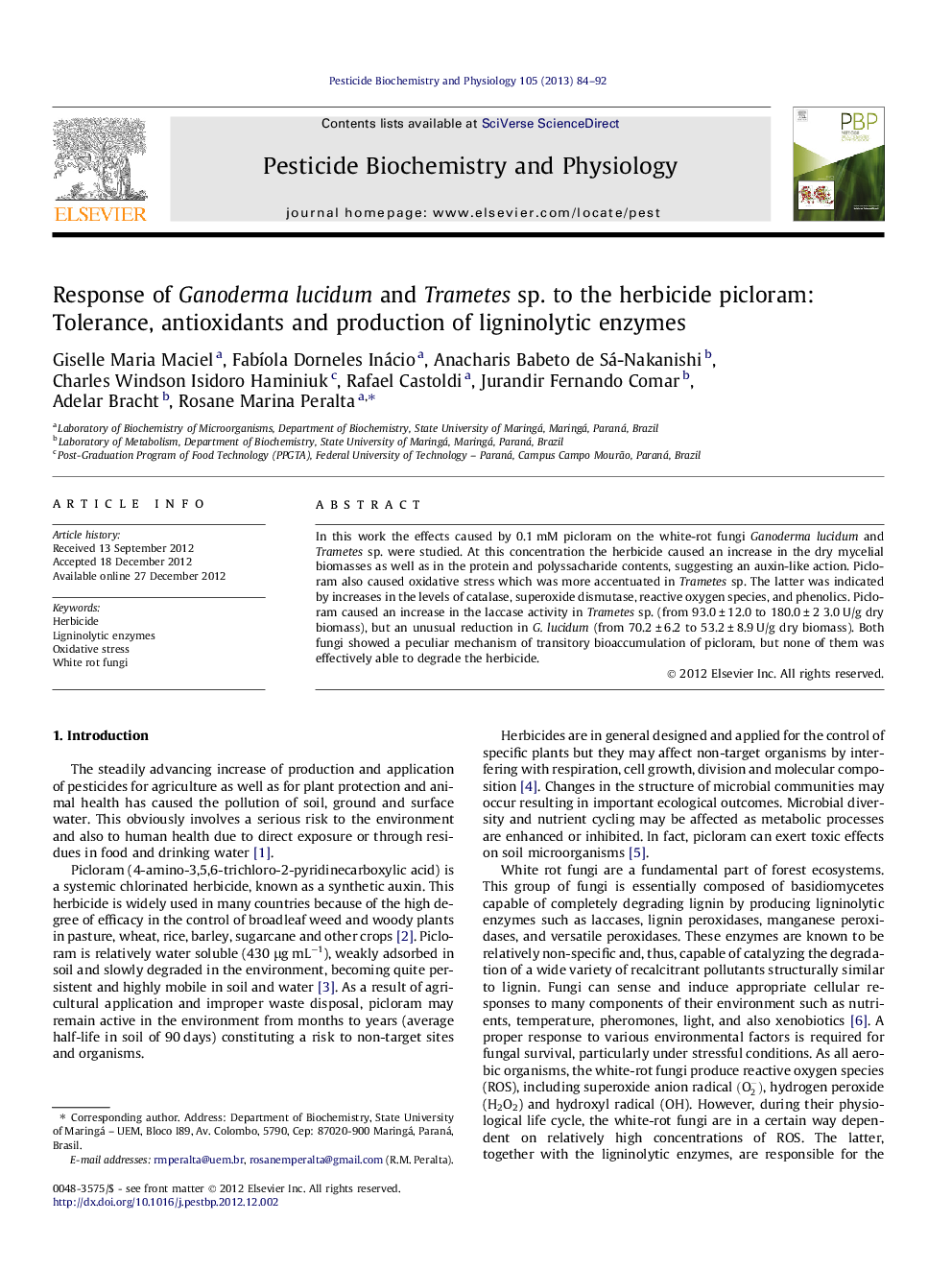| Article ID | Journal | Published Year | Pages | File Type |
|---|---|---|---|---|
| 2009432 | Pesticide Biochemistry and Physiology | 2013 | 9 Pages |
In this work the effects caused by 0.1 mM picloram on the white-rot fungi Ganoderma lucidum and Trametes sp. were studied. At this concentration the herbicide caused an increase in the dry mycelial biomasses as well as in the protein and polyssacharide contents, suggesting an auxin-like action. Picloram also caused oxidative stress which was more accentuated in Trametes sp. The latter was indicated by increases in the levels of catalase, superoxide dismutase, reactive oxygen species, and phenolics. Picloram caused an increase in the laccase activity in Trametes sp. (from 93.0 ± 12.0 to 180.0 ± 2 3.0 U/g dry biomass), but an unusual reduction in G. lucidum (from 70.2 ± 6.2 to 53.2 ± 8.9 U/g dry biomass). Both fungi showed a peculiar mechanism of transitory bioaccumulation of picloram, but none of them was effectively able to degrade the herbicide.
Graphical abstractFigure optionsDownload full-size imageDownload as PowerPoint slideHighlights► Picloram is a systemic chlorinated herbicide, known as a synthetic auxin. ► White rot fungi are known as able to degrade several herbicides. ► Ganoderma lucidum and Trametes sp. are resistant but do not degrade picloram. ► Picloram causes a series of metabolic alterations in the fungi. ► Picloram caused an increase in the laccase activity in Trametes sp. but an unusual reduction in G. lucidum.
